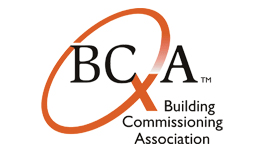The Building Commissioning Association (BCA) officially released its New Construction Building Commissioning Best Practices. This publicly available document is applicable to most building types and distills the long list of guidelines, and longer list of tasks, into easy-to-navigate activities that represent the ideal commissioning process.
This document represents a collaborative effort on the part of several leading experts in the field of commissioning. Bruce Pitts of Wood Harbinger, Inc and Karl Stum of Summit Building Engineering spearheaded this two-year effort.
According to its authors, it aims to promote commissioning in the marketplace by defining the qualities and characteristics of best commissioning practices and to raise professional standards by establishing a benchmark against which the market can gauge quality and professionalism, and which the BCA can use to objectively evaluate other commissioning initiatives, including their own.
“I am proud of this Best Practices document,” stated BCA President Mark F. Miller, PE, CCP. “A unique and valuable aspect of this document is to identify several of the most common issues, pitfalls and challenges that BCA members see in the industry related to the practice of commissioning new construction and major renovation projects. Our hopes are that by highlighting these challenges and identifying proven strategies for overcoming them that this will heighten awareness and understanding and lead the industry to overcome these problems while promoting quality and standardization in the industry.”
New Construction Building Commissioning Best Practices draws upon existing resources such as the BCA’s own Building Commissioning Handbook, NEBB Procedural Standards for “Whole Building Systems Commissioning of New Construction”, National Institute of Building Science (NIBS) “Whole Building Design Guide”, ASHRAE Guideline 0-2005, ASHRAE Guideline 1.1-2007 and the USGBC LEED rating system.
Best Practices in Commissioning Existing Building is available in its entirety on the BCA website at www.bcxa.org. BD+C
Related Stories
| May 18, 2011
Carnegie Hall vaults into the 21st century with a $200 million renovation
Historic Carnegie Hall in New York City is in the midst of a major $200 million renovation that will bring the building up to contemporary standards, increase educational and backstage space, and target LEED Silver.
| May 17, 2011
Redesigning, redefining the grocery shopping experience
The traditional 40,000- to 60,000-sf grocery store is disappearing and much of the change is happening in the city. Urban infill sites and mixed-use projects offer grocers a rare opportunity to repackage themselves into smaller, more efficient, and more convenient retail outlets. And the AEC community will have a hand in developing how these facilities will look and operate.
| May 17, 2011
Architecture billings index fell in April, hurt by tight financing for projects
The architecture billings index, a leading indicator of U.S. construction activity, fell in April, hurt by tight financing for projects. The architecture billings index fell 2.9 points last month to 47.6, a level that indicates declining demand for architecture services, according to the American Institute of Architects.
| May 17, 2011
Sustainability tops the syllabus at net-zero energy school in Texas
Texas-based firm Corgan designed the 152,200-sf Lady Bird Johnson Middle School in Irving, Texas, with the goal of creating the largest net-zero educational facility in the nation, and the first in the state. The facility is expected to use 50% less energy than a standard school.
| May 17, 2011
Gilbane partners with Steel Orca on ultra-green data center
Gilbane, along with Crabtree, Rohrbaugh & Associates, has been selected to partner with Steel Orca to design and build a 300,000-sf data center in Bucks County, Pa., that will be powered entirely through renewable energy sources--gas, solar, fuel cells, wind and geo-thermal. Completion is scheduled for 2013.
| May 17, 2011
Should Washington, D.C., allow taller buildings?
Suggestions are being made that Washington revise its restrictions on building heights. Architect Roger Lewis, who raised the topic in the Washington Post a few weeks ago, argues for a modest relaxation of the height limits, and thinks that concerns about ruining the city’s aesthetics are unfounded.
| May 17, 2011
The New Orleans master plan
At an afternoon panel during last week's AIA National Conference in New Orleans, Goody Clancy Principal David Dixon and Manning Principal W. Raymond Manning shared their experiences creating the New Orleans Master Plan, a document that sets a new course for the city, from land use and transportation planning to environmental protection.
| May 17, 2011
Do these buildings look like buffalo to you?
It’s hard to contemplate winter now that we’re mid-spring, but when the seasons change, ice skaters in Winnipeg will be able to keep warm in plywood shelters designed by Patkau Architects. The designers created temporary shelters inspired by animal behavior—specifically, buffalo bracing against the wind. Check them out.
| May 16, 2011
USGBC and AIA unveil report for greening K-12 schools
The U.S. Green Building Council and the American Institute of Architects unveiled "Local Leaders in Sustainability: A Special Report from Sundance," which outlines a five-point national action plan that mayors and local leaders can use as a framework to develop and implement green schools initiatives.












